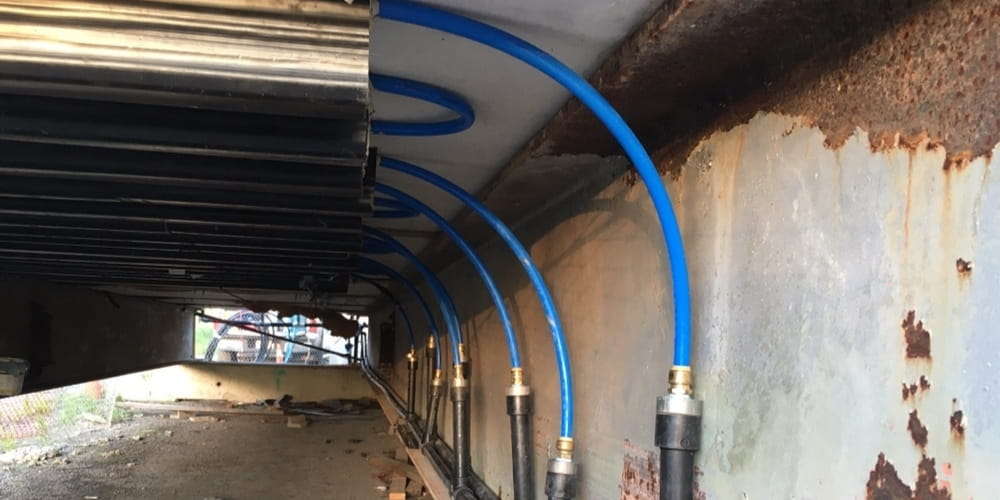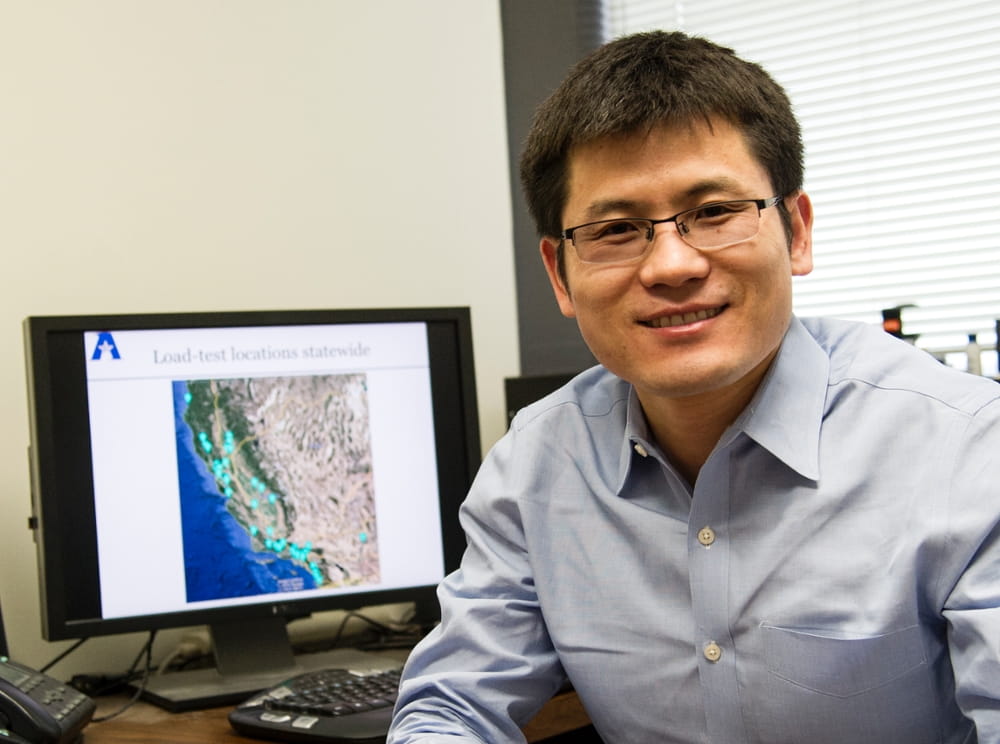A new way to de-ice bridges

A team of researchers at The University of Texas at Arlington has earned funding to further test whether geothermal energy can make Texas bridges and overpasses safer during winter weather.
Thanks to $100,000 in funding from the Texas Department of Transportation (TxDOT), Xinbao Yu, associate professor of civil engineering, will test a new design for geothermal loops beneath the bridge deck and perform a cost/benefit analysis and environmental impact survey at the test site, located off Division Street near Dottie Lynn Parkway in Arlington.
Anand Puppala, a former UTA civil engineering professor who is now at Texas A&M University, is co-principal investigator on the project.

When geothermal de-icing systems are installed in new bridges, groundwater is pumped through a circulation pipe to bring thermal energy from the ground to the surface. One end of the circulation pipe is embedded into the bridge deck, which warms to the point where ice and snow melt instead of sticking to the surface.
Installing a similar system on the underside of existing bridges adds challenges, because the heat-transfer efficiency must be large enough that the heat goes to the bridge deck, not to the air.
Yu and Puppala have focused on creating new technology to accomplish this goal. Their original concept involved using panels that contained circulation pipes, but that hindered TxDOT’s ability to inspect the bridge deck from below. So the researchers created a system that left open spaces between the pipes.
“We have had excellent results in our tests so far, and I’m very confident that our system will work,” Yu said. “This additional funding will allow us to further test our concepts and ensure that it is environmentally safe and fiscally responsible.”
UTA Civil Engineering Department Chair Ali Abolmaali said Yu’s work is an example of how UTA faculty successfully collaborate with state agencies to provide solutions to infrastructure problems.
“We have a long history of working with TxDOT to test materials and solutions to the unique issues the agency faces in maintaining Texas roads,” Abolmaali said. “Dr. Yu’s work could help TxDOT keep bridges and overpasses safer during extreme winter weather in a way that is better for the environment than using salt and sand—and that will be well worth the cost.”
-Written by Jeremy Agor, College of Engineering